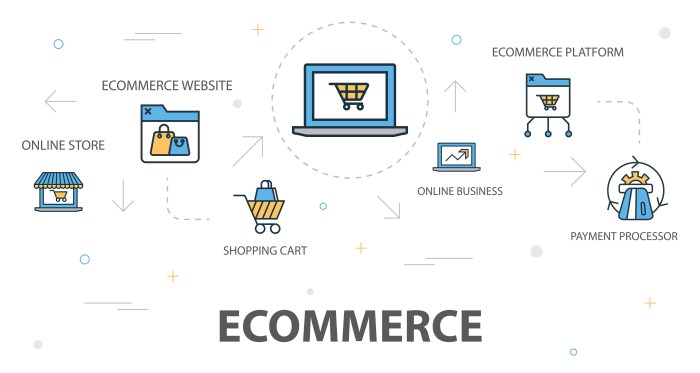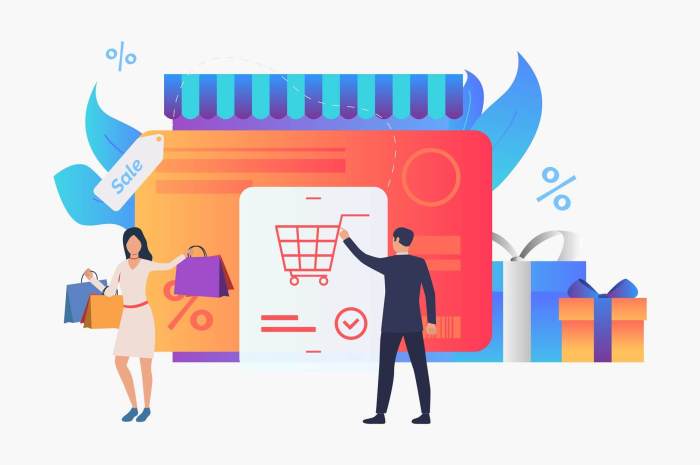Using Facebook for E-commerce opens up a world of possibilities for online businesses, providing a dynamic platform to reach and engage customers in innovative ways. Dive into this guide to discover the key strategies and tips for leveraging Facebook’s power in the e-commerce realm.
From setting up your Facebook store to mastering advertising and customer engagement, this comprehensive overview will equip you with the tools needed to thrive in the competitive online market.
Introduction to Facebook for E-commerce: Using Facebook For E-commerce
Facebook has become a powerful platform for e-commerce, allowing businesses to reach a wider audience and increase sales through online marketing strategies. With over billions of active users, Facebook offers a unique opportunity for businesses to connect with potential customers and build brand awareness.
The Benefits of Leveraging Facebook for Online Business
- Increased Reach: By utilizing Facebook for e-commerce, businesses can reach a larger audience beyond their physical location, leading to potential customers worldwide.
- Targeted Advertising: Facebook’s advertising tools allow businesses to target specific demographics, interests, and behaviors, ensuring that their ads are shown to the most relevant audience.
- Customer Engagement: Through features like Facebook Live, Messenger, and comments, businesses can engage directly with customers, answer questions, and provide real-time support.
- Data Analytics: Facebook provides valuable insights and analytics tools that help businesses track the performance of their e-commerce activities and make data-driven decisions.
Evolution of Facebook as a Platform for E-commerce
Over the years, Facebook has evolved from a social networking site to a robust e-commerce platform with features like Facebook Shops, Marketplace, and in-app checkout options. Businesses can now create a seamless shopping experience for customers directly on Facebook, making it easier to sell products and drive conversions.
Setting Up a Facebook Store
Setting up a Facebook store is a great way to expand your e-commerce reach and connect with customers on a popular social media platform. Here are the steps involved in setting up a Facebook store:
Creating a Facebook Page
To set up a Facebook store, you first need to create a Facebook Page for your business. Make sure to fill out all the necessary details, including your store’s name, description, and contact information.
Adding the Shop Section
Once your Facebook Page is set up, you can add the Shop section to your page. This section will allow you to showcase your products and manage your inventory directly on Facebook.
Uploading Products
After adding the Shop section, you can start uploading your products to your Facebook store. Make sure to include high-quality images, detailed descriptions, and accurate pricing for each product.
Setting Up Payment Methods
You’ll also need to set up payment methods for your Facebook store. You can choose from options like PayPal, Stripe, or manual payment methods, depending on what works best for your business.
Optimizing Store Layout for Conversions
To optimize your store layout for better conversions, consider the following tips:
- Use high-quality images that showcase your products effectively.
- Write compelling product descriptions that highlight key features and benefits.
- Make it easy for customers to navigate your store and find what they’re looking for.
- Include customer reviews and testimonials to build trust with potential buyers.
Features for E-commerce on Facebook
Facebook offers various features to enhance the e-commerce experience for both businesses and customers:
- Messenger integration for real-time customer support.
- Targeted advertising options to reach specific customer segments.
- Shop tab for easy access to products on your Facebook Page.
- Insights and analytics to track the performance of your store and make data-driven decisions.
Facebook Advertising for E-commerce

Facebook advertising is a powerful tool for e-commerce businesses to reach their target audience, increase brand awareness, and drive sales. With its extensive targeting options and reach, Facebook ads can be a game-changer for online retailers looking to expand their customer base and boost revenue.
Creating Effective Ad Campaigns
- Define clear objectives: Before creating an ad campaign, clearly define your goals whether it’s to increase website traffic, generate leads, or drive sales.
- Compelling visuals and copy: Use eye-catching images or videos and engaging ad copy to capture users’ attention and entice them to click.
- A/B testing: Experiment with different ad creatives, messaging, and targeting to see what resonates best with your audience and drives the most conversions.
- Track and analyze results: Monitor the performance of your ads regularly, analyze key metrics like click-through rates, conversion rates, and return on ad spend to optimize your campaigns for better results.
Targeting Options and Strategies, Using Facebook for E-commerce
- Custom Audiences: Utilize custom audiences to retarget website visitors, email subscribers, or existing customers with relevant ads to encourage repeat purchases.
- Lookalike Audiences: Create lookalike audiences based on your existing customer data to reach new users who share similar characteristics and behaviors with your best customers.
- Interest Targeting: Target users based on their interests, behaviors, and demographics to reach a specific audience segment that is likely to be interested in your products.
- Dynamic Ads: Use dynamic ads to automatically show personalized product recommendations to users who have visited your website or shown interest in specific products.
Customer Engagement and Retention
Customer engagement and retention are crucial aspects of a successful e-commerce business on Facebook. By fostering relationships with customers, businesses can increase brand loyalty, drive repeat purchases, and generate positive word-of-mouth recommendations.
Strategies for Engaging Customers on Facebook
- Regularly post engaging content such as product updates, promotions, behind-the-scenes glimpses, and user-generated content.
- Utilize interactive features like polls, quizzes, and live videos to encourage participation and feedback from your audience.
- Respond promptly to customer inquiries, comments, and messages to show that you value their input and are attentive to their needs.
Importance of Building Relationships for E-commerce Success
Building relationships with customers on Facebook is essential for e-commerce success because it creates a sense of trust and connection between the brand and the consumer. By engaging with customers in a meaningful way, businesses can improve customer retention rates, increase customer lifetime value, and ultimately drive revenue growth.
Examples of Successful Customer Engagement and Retention Strategies on Facebook
- ASOS, a popular online fashion retailer, uses Facebook to showcase user-generated content, run interactive campaigns, and provide personalized recommendations to its customers.
- Sephora engages customers through Facebook Live tutorials, product demonstrations, and exclusive promotions, creating a community of beauty enthusiasts who feel connected to the brand.
- Lululemon promotes customer loyalty by sharing inspirational stories, fitness tips, and wellness advice, fostering a sense of community among its active wear enthusiasts.
Leveraging Facebook Analytics

When it comes to running a successful e-commerce business on Facebook, leveraging Facebook analytics is crucial for making informed decisions and optimizing your strategies.
Key Metrics to Track and Analyze
Tracking and analyzing key metrics on Facebook can provide valuable insights into the performance of your e-commerce store. Some key metrics to focus on include:
- Audience Demographics: Understanding the demographics of your audience can help you tailor your marketing strategies to target the right customers.
- Engagement Metrics: Monitoring likes, comments, and shares can give you an idea of how engaging your content is and how well it resonates with your audience.
- Conversion Rates: Tracking conversion rates can help you measure the effectiveness of your ads and promotions in driving sales.
- Retention Rates: Analyzing customer retention rates can help you identify loyal customers and develop strategies to retain them.
Interpreting and Utilizing Data Effectively
Once you have collected data from Facebook analytics, it’s important to interpret and utilize it effectively to improve your e-commerce business. Here are some tips to help you make the most of your data:
- Set Clear Goals: Define specific goals for your e-commerce business and use data to track your progress towards achieving them.
- Compare Performance Over Time: Monitor how key metrics change over time to identify trends and patterns that can inform your decision-making.
- Experiment and Test: Use A/B testing and experimentation to optimize your strategies based on data-driven insights.
- Implement Data-Driven Marketing: Use data to personalize your marketing efforts and create targeted campaigns that resonate with your audience.
